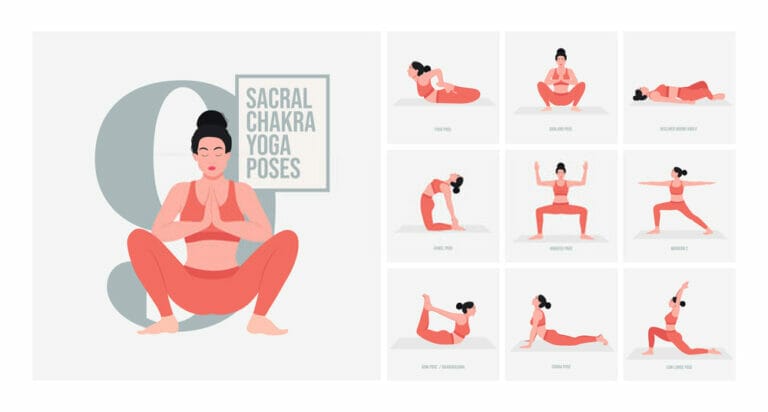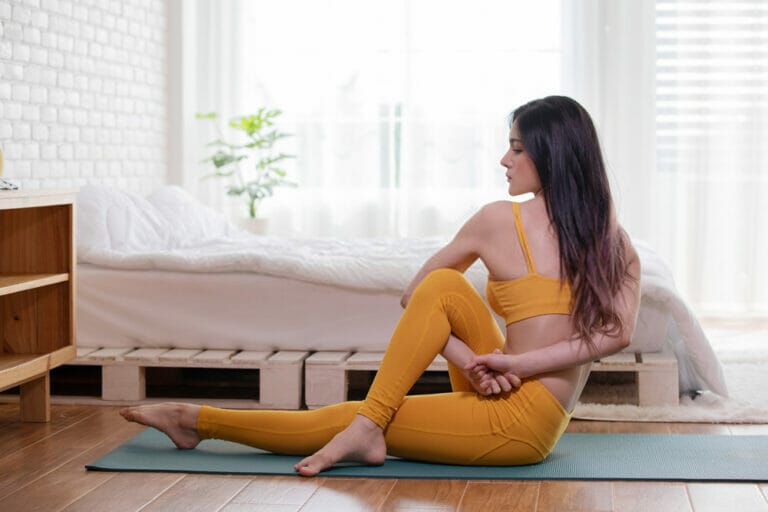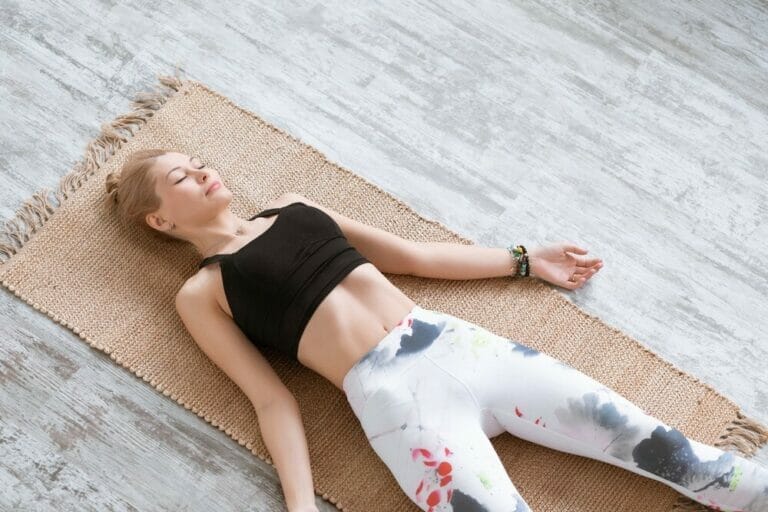Dragon Pose
The remedy for hours of sitting in a chair each day is the dragon posture in yin yoga! This pose is unlike any other in that it opens the hip flexors in the front of your hips.
Although it might seem like an easy pose, this posture requires you to stretch the front of your hips in a way that you don’t usually do.
What is the dragon pose?
Dragon pose can be tricky to get into, but it may be worth the challenge! The dragon posture is challenging for three reasons:
- It stretches the psoas muscles.
- It opens up the hip flexors in the front of your hips
- Requires you to keep your spine straight.
Dragon Pose is called Lizard Pose in English and Sanskrit, Utthan Pristhasana. The stretch posture is performed in a ‘prone’ stance and forward-bend stretch posture. The Lizard asana necessitates balance as well.
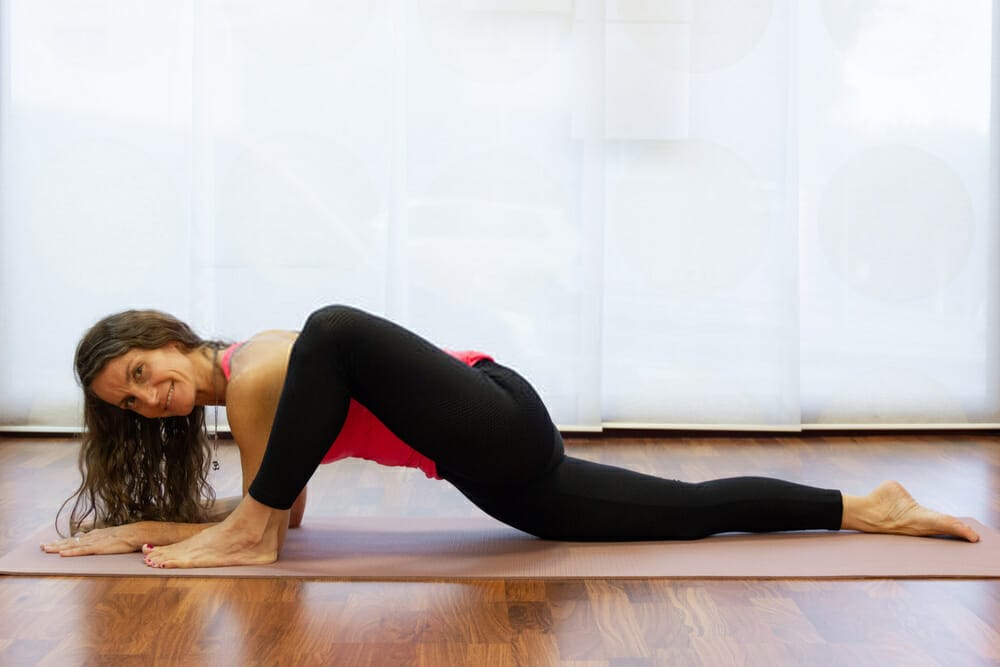
The Solar Plexus, Sacral, and Root Chakras, energy centres, are activated in this pose. It also aids in the management of Pitta and Kapha doshas.
This position controls and regulates the three elements of the body, namely Fire, Earth, and Water.
Let’s look at the risks and precautions of this pose.
Risks and Precautions
This posture is not for people with back or disc injuries. When performing this pose, one should only go to the limit their body permits.
One need to take extreme care to ensure that the back remains straight during this pose and that the spine does not hurt. Those suffering from hernia, osteoporosis and meniscus problems should avoid doing this asana.
Level of difficulty – Easy
The level of difficulty for this pose is relatively easy. Anyone of any ability level can perform it.
People with a pre-existing injury in the back or neck should not do it. Those who suffer from chronic knee problems should also avoid doing this posture.
Benefits and Advantages

- Dragon yoga benefits a variety of organs in the human body. For example, Kidneys, Liver, Spleen, Gall Bladder, Urinary Bladder, and various other organs benefit significantly from the frequent practice of Dragon posture.
- This yoga asana can help with the hips, ankles, and lower back joints.
- It is beneficial if you have a bad back, commonly known as sciatica – a condition where the sciatic nerve is pinched. If you have this condition, you can do Dragon Pose a couple of times a day, either in the morning or night. It will improve your pain levels and potentially prevent future occurrences in the same spot.
- It is an intense yoga pose for hip stretching and is beneficial to joints – especially your lower back. Sometimes, while doing this asana improperly, the practitioner may feel pain in their body and limbs.
- There are no significant risks with this pose. However, if one has bad ankles or hips (or both), consult a medical professional.
- This workout significantly strengthens the quadriceps – the muscles in the front of your thighs. The quadriceps provide the ligaments and tendons that stabilize the knee and hip joints. In addition, this yoga posture provides one with great leg strength.
- This yoga pose can help you stretch your hip flexors more effectively – the muscles in your front hip. The hip flexors play a role in your ability to bend forward, walk and run. Some of the benefits of this yoga posture include decreased pain, increased mobility and flexibility, and enhanced strength in the hips and knees.
What muscles are targeted in this pose?
The spleen, stomach, liver, gallbladder, urinary bladder, and kidneys meridians are all affected by Utthan Pristhasana. In addition, this asana all worked out in the arms, shoulders, lower back, biceps, triceps, abs, hips, hamstrings, pelvis, knees, quadriceps, and psoas.
Lets now look at how to do the Dragon Pose:
How To Do This Pose:

- Step your right foot between your hands, the right knee slightly above the heel, from a tabletop position.
- Lower the left knee to the floor and slide the leg back until the left hip and thigh stretch. Make sure you’re not resting your kneecap right on top of it but rather slightly beyond it (towards the bottom of the thigh). Next, gently plant your front foot on the ground.
- Hands should be kept on either side of the front foot or blocks if necessary.
- Maintain the position for 3 to 5 minutes.
- To exit the position, bring your back knee forward and tuck your toes, then step back into a tabletop position with your hands on each side of your right foot.
- Rep on the opposite side.
Tips
Follow these steps to do the Dragon Pose.
- Do not allow your lower back to arch towards the ground.
- To begin, hold for 1 to 3 minutes, as the sensations in this pose are rather intense.
- It may be possible to relax more deeply by placing a block vertically under the front thigh or hip for support.
- If you’re uncomfortable, put a blanket beneath your back knee.
- If you are performing the posture on a foam pad, you may want to sit on a block or cushion with your legs bent and place your hands under the back of the thigh.
Alternative poses to do
You may try these poses if you feel that you are working out too hard:
Dragon Flying High
You must rest your arms on your front thigh and elevate your chest in this pose. Try to put your entire weight on your hips. This yoga stance is highly beneficial to the urinary bladder.
Dragon Fly Low
You must retain both of your hands within your front foot and drop your hips by simply walking both of your hands forward. Then, relax your elbows on a bolster and come down on them.
Twisted Dragon
At this point, push your front leg to one side with one hand while rotating your chest to the sky.
Dragon with Wings
Place your hands on the floor and spin around your knee in a winged Dragon posture for a few seconds. Aside from that, you must roll towards the outside border of that foot while keeping your knee low. When you’re through with the pose, rest your elbows on a block to exit.
The Dragon’s Overstep
It’s a good yoga that can help with various ankle issues. Maintain forward motion with your front knee or backward motion with your heel. Only do this when your heel is ready to lift off the ground.
What poses can you do before or after the dragon pose?
Before practising Dragon pose, we can opt for
- Cat pose
- Camel pose
- Sphinx pose
- Downward dog pose
After completing the dragon poses, one should perform
- Bow pose (Dhanurasana) for abdominal and chest muscles.
If the back is painful or stiff after the Dragon posture and one cannot return to a seated position quickly, it is better to practice prone postures like Cow Pose, Camel Pose or Lion Pose.
Who should avoid the dragon pose?
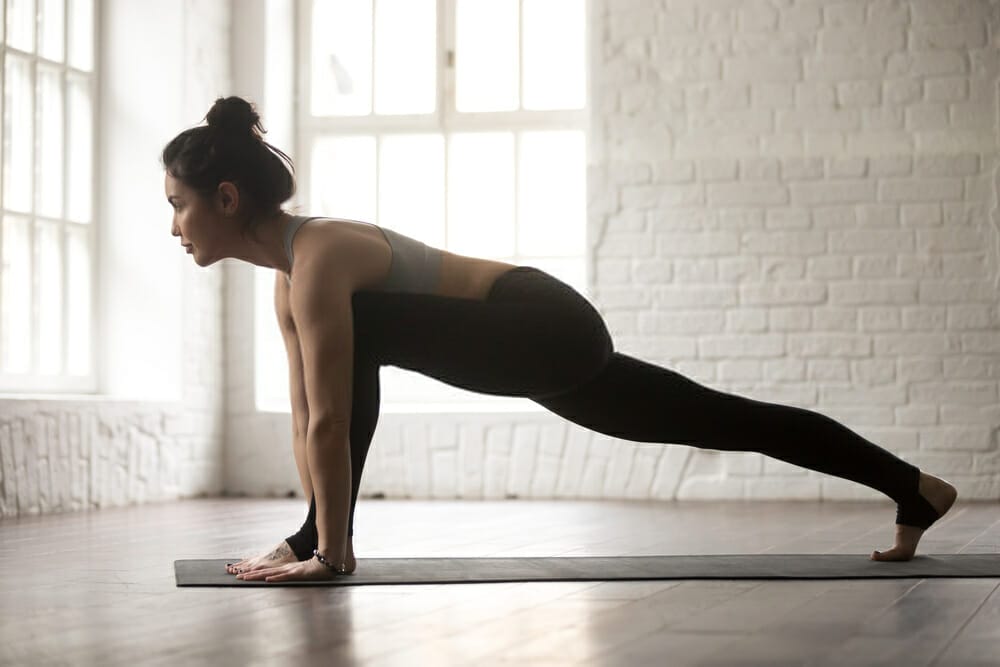
It is good to avoid this pose if one has back problems.
- People who have knee problems should avoid practising this pose
- Those who have any wrist or ankle problems should also not do this posture
- If someone has severe knee pain, even with the help of a blanket, then it is better for them to avoid this asana.
On the other hand, it is advisable to practise and master these postures when your knees are healthy. The best time to do this posture is in the morning before you eat your breakfast.
What is the best way to practice this pose?
It is better to practise this pose with an expert class in their field, rather than practising it alone. The teacher will guide you throughout and ensure you do the posture right by demonstrating it three times. It can help you learn much more efficiently and benefit from it.
Conclusion:
It is essential to strengthen the body and joints to avoid any mishaps. Practising this pose can help prevent injuries and improve your muscles, ligaments, and cartilage.
One must learn the proper manner of doing the pose to avoid injury or pain. However, despite following all instructions and precautions, many people still injure themselves while attempting this pose.
It happens due to the wrong posture or not breathing while practising this posture, leading to back pain.
So, find a good teacher to guide you along the way. Also, exercise with proper diet and sleep. Remember, it is not only about increasing your height but also about having better health.



